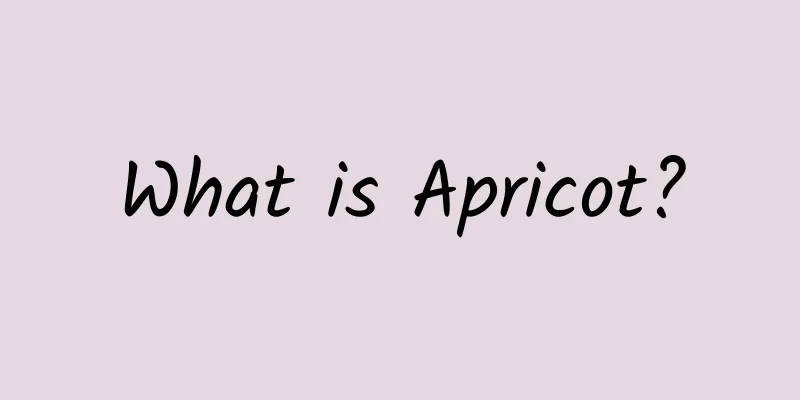What is Apricot?

|
Vegetables are the most commonly eaten foods in the diet. They are loved by everyone because they are not only rich in vitamins but also have a very low fat content. We have seen a lot of vegetables, and I think the most common one is green vegetables. There are also cauliflower, etc., but the nutritional content of different vegetables is definitely different. Only by having different vegetable nutrients can you grow healthier. We all know that as we age, diseases will come to us if we don't protect and care for our bodies. Only by having a good body can you have a good physique to resist these diseases, so try to eat different vegetables so that your nutrition will be balanced. Because some vegetables contain vitamin A, while others contain vitamin B, and our body does not only need one kind of vitamin, but needs a combination of several vitamins to replenish the body with sufficient vitamins. So does apricot have vitamins? Ailanthus annuus, scientifically known as New Zealand spinach, foreign spinach and summer spinach. Aizoaceae, Aizogenus. Annual semi-climbing herb. 2n=4x=32. It is native to Australia, Southeast Asia, Chile and other places. The root system is well-developed, the stem is round and green, upright at first and creeping later, with vines up to several meters long. The leaves are triangular, alternate, green, and covered with fine silver powder. Yellow flowers are borne in the leaf axils, without petals, and the perianth is bell-shaped with 4 lobes. The nuts are diamond-shaped, and each fruit contains several seeds. It likes warmth, is heat-resistant and drought-resistant, has a wide adaptability, and is mainly cultivated in tropical and temperate zones. Direct seeding is the main method, but seedlings can also be raised and transplanted. The seeds should be soaked before sowing to facilitate germination. The seedlings and young shoots are edible. It can be eaten as a vegetable, rich in iron, calcium, vitamin A and various vitamins B. It can also be used as medicine to clear away heat and detoxify, dispel wind and reduce swelling, and treat enteritis, sepsis, carbuncle swelling, and wind-heat red eyes. Whole herb: sweet, slightly spicy, neutral. Clears away heat, detoxifies, dispels wind and reduces swelling. Used for diarrhea, sepsis, redness and swelling of carbuncle, red eyes due to wind-heat, gastric cancer, esophageal cancer, and cervical cancer. Functions and indications: clearing away heat, detoxifying, dispelling wind and relieving swelling. Treat enteritis, septicemia, redness and swelling of carbuncle, and red eyes due to wind-heat. ① "Fujian Folk Herbs": dispel wind and heat, reduce swelling and detoxify. ② "Illustrated Guide to Chinese Medicinal Plants": Treats cancer, enteritis, and septicemia. Sweet, slightly spicy, neutral in nature. Efficacy: clearing away heat, detoxifying, dispelling wind and reducing swelling. Used for diarrhea, redness and swelling of carbuncle, septicemia, and red eyes due to wind-heat. Contains chemical ingredients such as vitamin A, phospholipids, and amygdaloids. Pharmacological Action Ailanthus alba extract has strong anti-cancer activity against mouse sarcoma S180 (ascites type) and sarcoma S180 (solid type). The water extract of Ailanthus alba has inhibitory activity against human cervical cancer HeLa cells, and its active ingredient is a high molecular compound. Anti-cancer applications 1. For the treatment of gastric cancer, esophageal cancer, and cervical cancer, take 90g of Ailanthus alba, 120g of water chestnut stem (fresh grass or water chestnut with shell), 30g of coix seed, and 12g of water chestnut cassia seed. Decoction in water. 2. For the treatment of breast cancer, gastric cancer and cervical cancer, take 5 water chestnuts, 30g of apricot kernel, 35g each of eranium seedling, coix seed and cassia seed, decocted in water and taken orally, 1 dose per day. (1) Take 200g fresh apricot root, 50g coix seed and 15g water chestnut and cassia seed, decoct in water and take once a day. Practical Anti-Cancer Prescriptions (2) Collect the whole herb of Apricot in summer, wash and dry it in the shade, cut it into small pieces and use it, 17-21g each time, decoct it in water, filter it, and drink the clear liquid, twice a day. The food we eat in each season is different, because we know clearly that some out-of-season foods are not only useless but may also cause problems. Therefore, choosing food according to the different seasons is also a science. Regardless of the nutritional value of the food itself, it is important to consider whether it is suitable for living in such a season. Some foods fail to grow due to seasonal influences, but the apricot introduced above is a rare four-season food. |
<<: Medicinal value of baking powder
Recommend
Sunscreen may damage corals. How can you protect yourself from the sun when you go to the beach?
In 2018, the Republic of Palau restricted the sal...
AMIPCI: Online shopping spending in Mexico reached 162.1 billion pesos in 2014, up 34% year-on-year
According to a research report on e-commerce by t...
What are the medicinal values of leek seeds?
Leek seeds are a kind of lily plant, and are also...
The efficacy and function of milk ginseng
The essence of traditional Chinese medicine is to...
How to take maca powder
Maca powder is made by grinding dry maca into pow...
Although the "sea monsters" of the pre-scientific era were exaggerated, they were very useful for maritime safety! They also created a "distortion science"?
© Library of Congress Leviathan Press: Those who ...
The 10 most worthwhile fruits and vegetables to eat in winter, many people miss them!
Some foods can provide a lot of nutrition with ju...
The efficacy and function of Xinjiang Lithospermum officinale
There are many types of Chinese medicine. When we...
Where is the "genetic melting pot" in the history of tiger evolution? It's in China!
Produced by: Science Popularization China Author:...
What are the effects and functions of Bletilla striata
Bletilla striata is one of many Chinese medicinal...
Gray hair at a young age? These habits and nutrient deficiencies are accelerating the formation of gray hair
Reviewer of this article: Zhou Xiaobo, Doctor of ...
How to eat Dendrobium
Dendrobium, everyone knows how to use it? Do you ...
Apart from atoms and the spaces between them, all that remains is speculation
© Vulture Leviathan Press: Sand is something betw...
The efficacy and function of barberry
The traditional Chinese medicine barberry is ofte...
The efficacy and function of Huangqi peel
Huangqi peel is a traditional Chinese medicine. I...









